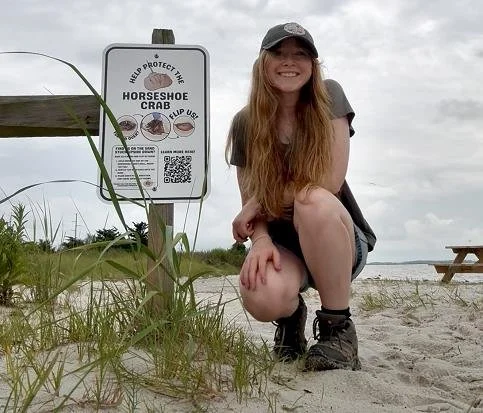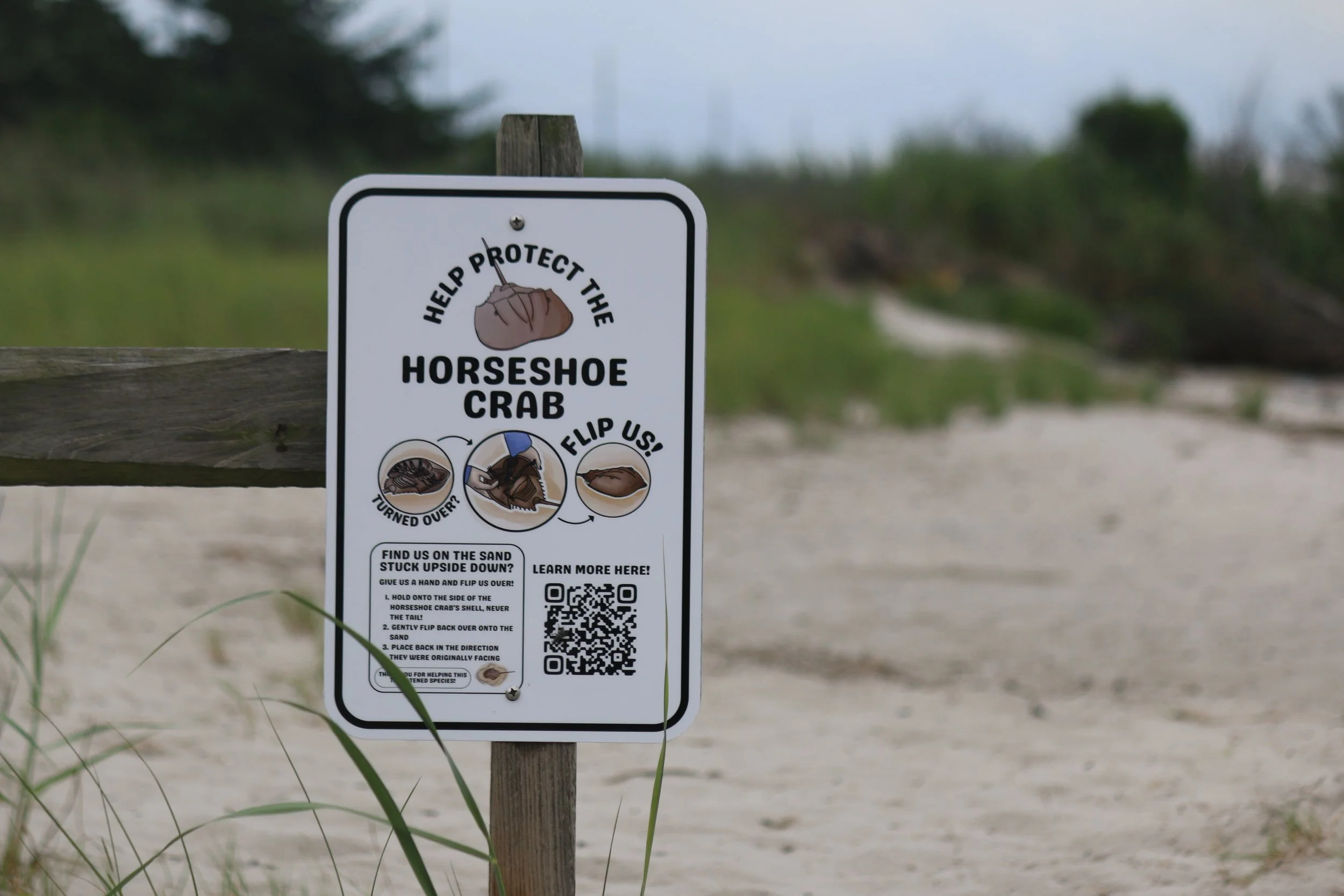2025 Delaware Audubon Conservation Grant recipient Sofia Rose Trone
As part of Delaware Audubon's 2025 Conservation Grant program, signs showing how to help stranded horseshoe crabs can now be seen in the vicinity of Delaware's inland bays. Sofia Rose Trone, an undergraduate at Purdue University, applied for the grant, designed the signs, and delivered them to her contacts in Sussex County. Nine signs were installed in six locations by DNREC and the Delaware Center for the Inland Bays along the coastline of Rehoboth Bay.
Horseshoe crabs, one of the world's oldest living species, is under attack from overharvesting. The region of the Delaware Bay is the largest concentration of horseshoe crabs in the world. Despite the depressed population in the Delaware Bay, a half million horseshoe crabs are still permitted to be taken for bait in that region. That does not include the number harvested for their blood by the unrestricted biomedical industry.
In spring, horseshoe crabs use the coastline of Delaware and New Jersey to reproduce. When they come up out of the water to spawn during high tides, many become stranded from being overturned by waves or trapped behind obstacles. According to the Wetland Institute, approximately 10% of stranded horseshoe crabs die from dehydration from being exposed to heat, or they become prey for gulls and other birds. Sofia's signs are a helpful contribution to their protection. Flipping them in the manner described on the signs gives them a chance to live another day. In addition to aiding in the survival of stranded horseshoe crabs, the signs also help raise awareness of the importance of protecting Delaware’s Official Marine Animal.
Since horseshoe crabs also use Delaware's beaches along the ocean to spawn, a potential project for a 2026 Conservation Grant is to place additional signs in the communities of Rehoboth Beach, Dewey Beach, Bethany Beach, and Fenwick Island.

